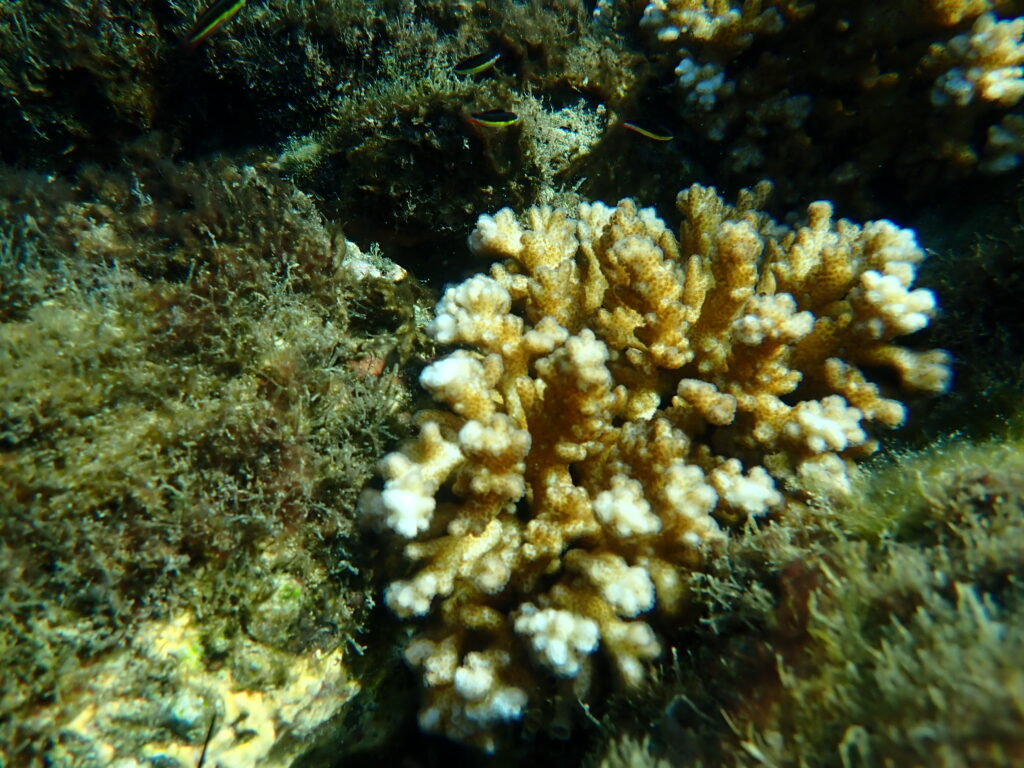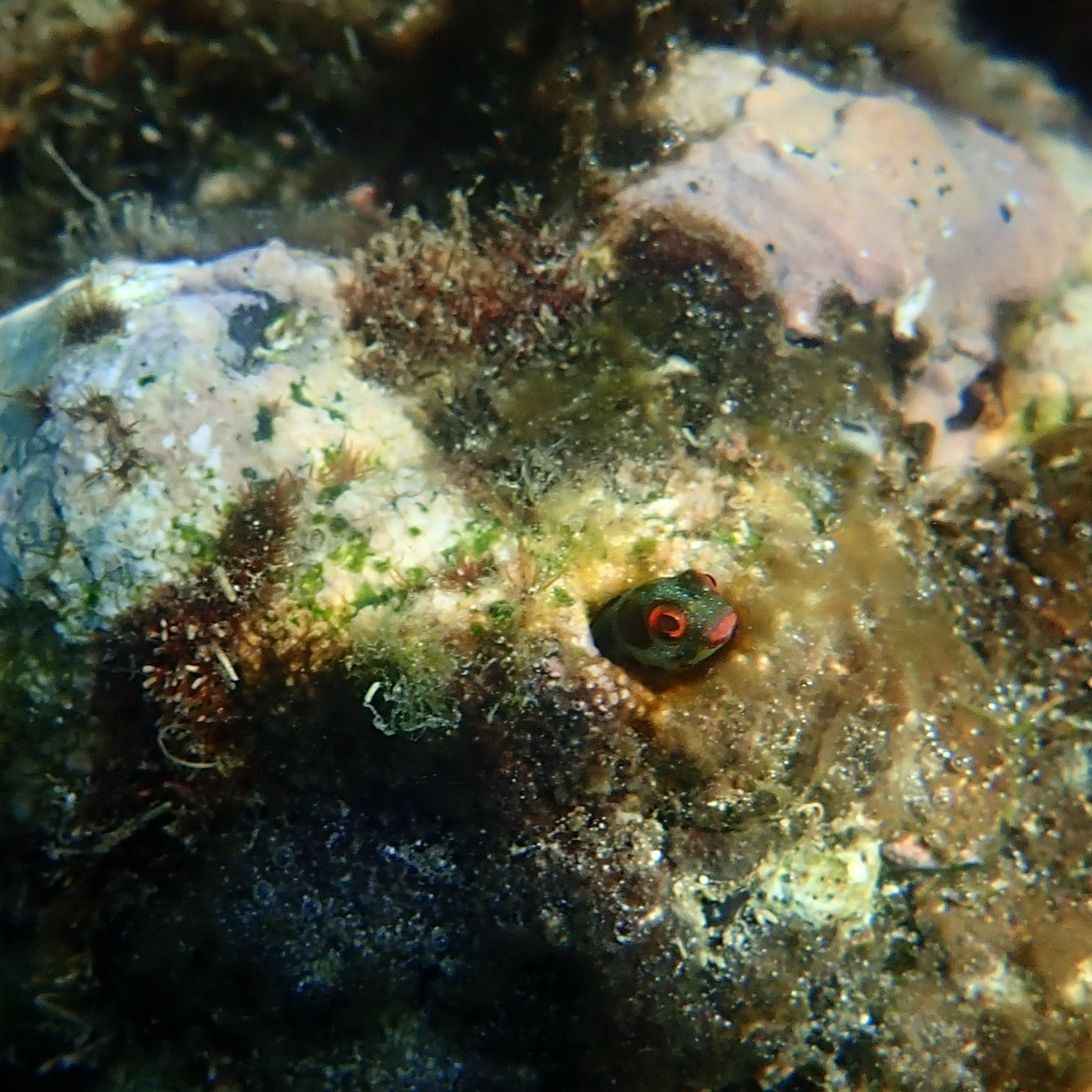Month's Subject: Underwater homes
Where and how species live in the water?
Coral houses
Many marine and fresh water animals live in homes. The most famous ones are corals. The corals you see are in a sense skyscrapers full of homes and each home houses a coral polyp. Some corals, such as Pocillopora capitata build branched colonies, like antlers. Others, like Porites lobata build huge domes and some form crusts (Gardineroseris planulata). Several species of branched coral grow thicker, sturdier branches in exposed sites and thinner, more open branches on sheltered sites.
But it does not stop there. While coral polyps are busy building new apartments, some sea urchins and marine worms burrow into the corals, slowly destroying part of the reef. A coral reef is in a dynamic equilibrium, with coral polyps building up and sea urchins, marine worms and others breaking down again. Worms do not only burrow into coral reefs, they also make burrows in the sandy sea bottoms, as do many other animals. Crabs, mantis shrimps, burrowing-mussels and blennies all excavate holes in sandy or rubble sea bottoms. Most molluscs, of course make homes as well: their shells. Bivalves are mostly sedentary, while gastropods can move around, carrying their home around.

Sand, Shells, ...
The larvae of caddishflies, who live in fresh water, build a home of material they find in their environment. Therefore, caddish flies living in streams with a sandy bottom, will glue grains of sand together to make a home. Caddish flies living in a stream with dead leaves and twigs on the bottom, will glue those together for a home. The homes offer physical protection and camouflage at the same time.
Just as we saw in the forest, some animals can not or will not make their own home and occupy abandoned homes. Hermit crabs are probably the most famous among them, using the shells of gastropods as their mobile home. When shells are in short supply, hermit crabs will take bottle tops or anything else they can use to protect themselves.
Most blennies (small elongated bottom-dwelling fish), like the Panamaic Barnacle Blenny (Acanthemblemaria hancocki) live in abandoned holes made by burrowing-mussels, abandoned worm tubes or in empty barnacle shells. Especially the males tend to stay inside the their shelter, only darting out to catch prey.
Garden eels (Heteroconger canabus) are another burrowing species. They make burrows and live in colonies of a few dozen each about 30 cm from the next. The anterior part of their body extends above the sand and they catch zooplankton carried along by the currents. live in colonies of dozens of eels on sandy bottoms. They construct burrows about 30 cm apart and

Prompt List
- Coral boring worms
- Hermit crab shell selection
- Digging holes: jawfish, garden eels and Pikeblennies
- Coral growth forms: Porites arnaudii, Porites lobata, Pocillopora damicornis, pocillopora capitata, Gardineroseris planulata.






